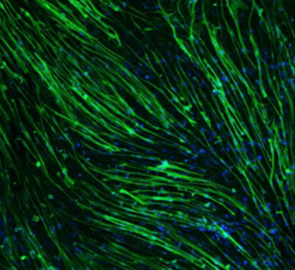
rPeptide是美国一家生物化学研发公司,主要产品涉及领域为老年性痴呆症与帕金森综合症研究使用的重组蛋白,重组多肽,抗体以及试剂等等,另外还提供一系列外包服务,从分子生物学,蛋白表达与蛋白纯化到13C与15N 统一标记蛋白与多肽。同时, rPeptide 技术平台可解决可溶性多肽/蛋白(例如:β-淀粉样蛋白、廋蛋白、前胰岛素)在大肠杆菌中表达等历史性难题。
以下是该公司部分代表产品:
Antibodies(抗体)

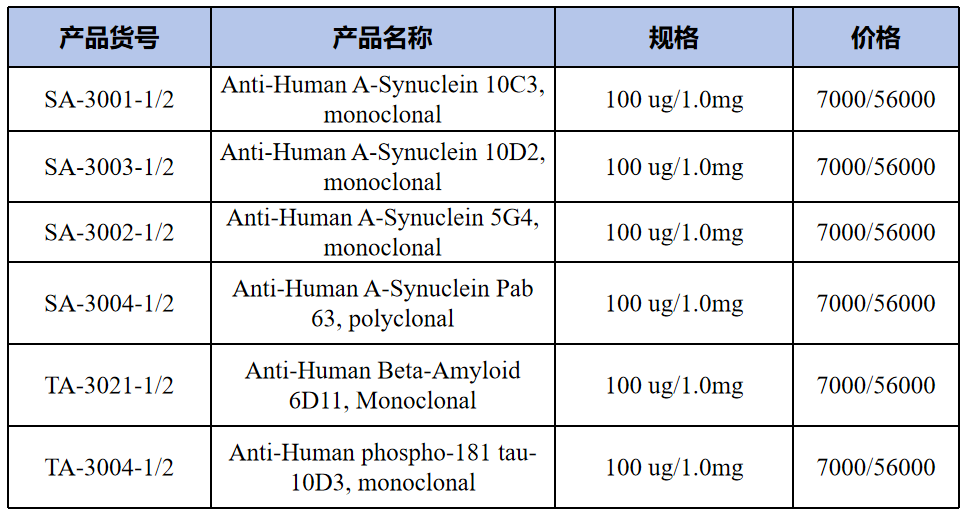
Peptides(多肽类)
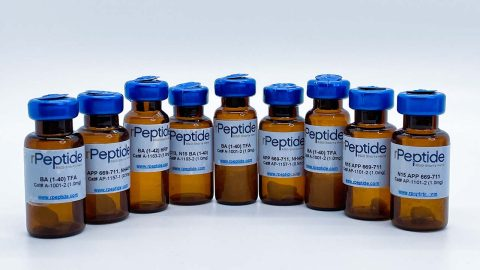

Proteins(蛋白质)
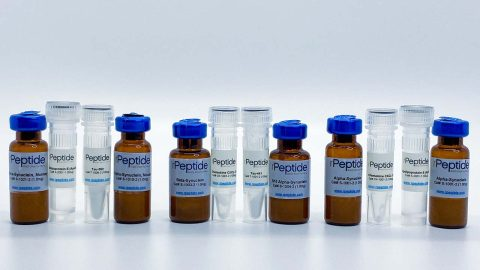
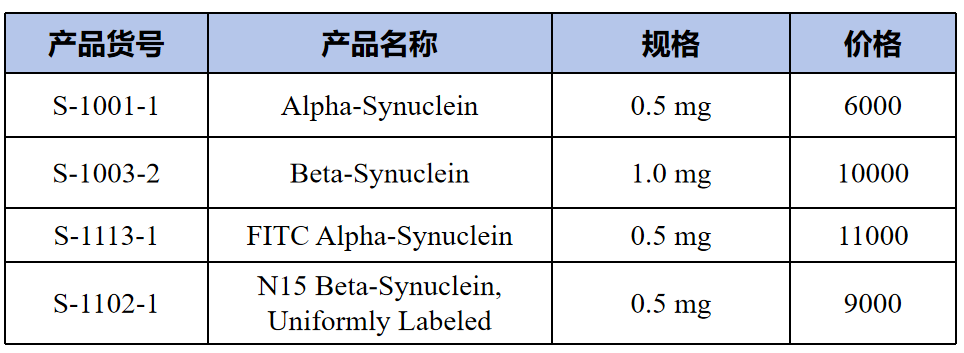
Neurodegenerative related compounds(神经退行性相关化合物)
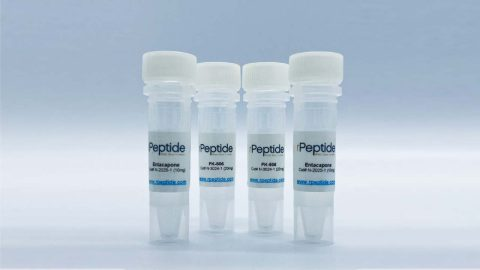
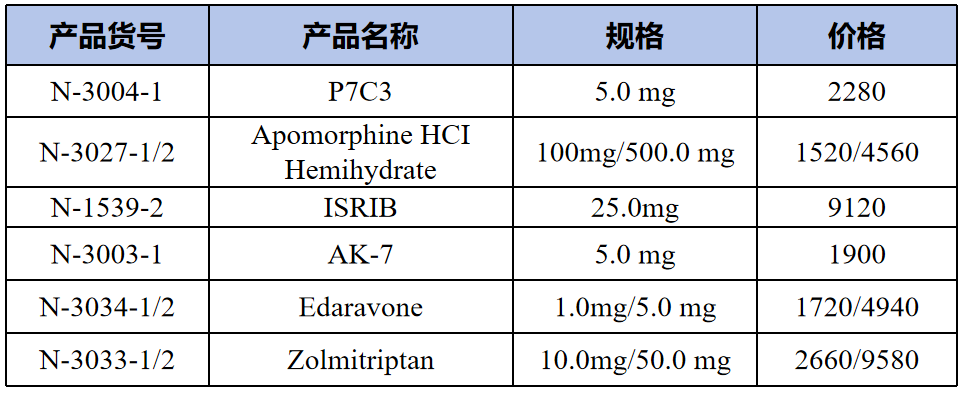
Coronavirus research tools(冠状病毒研究工具)

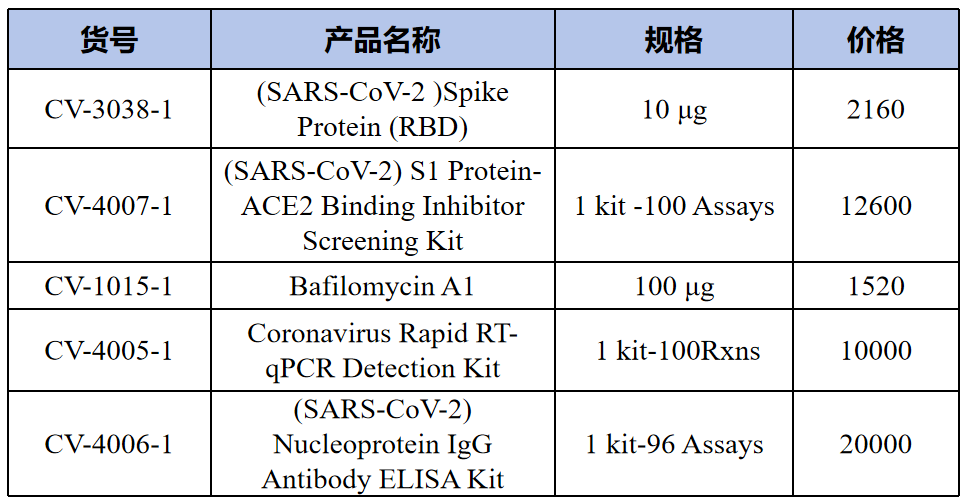
Kits(试剂盒)

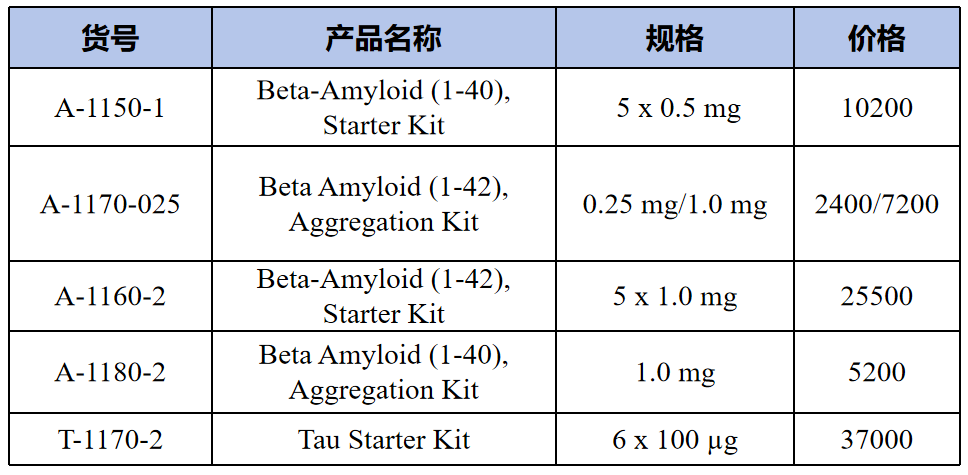
Preformed fibrils(预成型的纤维)


rPeptide 产品列表
Coronavirus Research Tools
| 货号 | 名称 | 规格 | 产品描述 |
| CV-1101-1 | Azithromycin | 25.0mg | Azithromycin is a macrolide antibiotic that inhibits 50S ribosomal subunit formation and elongation at transpeptidation step in gram positive and negative bacteria. In vivo activity shows improved pharmacokinetic properties when compared to erythromycin in mouse models. |
| CV-1101-2 | Azithromycin | 100.0mg | |
| CV-1015-2 | Bafilomycin A1 | 1.0mg | A Vacuolar H+-ATPase inhibitor, IC50 = 0.6-1.5 nM in bovine chromaffin granules. Highly selective for V-ATPase over F-ATPases and P-ATPase. Inhibits autophagy by preventing maturation of autophagic vacuoles via inhibition of fusion between autophagosomes and lysosomes. Inhibits bone resorption in various models. An extremely useful tool for exploring physiological processes regulated by V-ATPase. |
| CV-1015-1 | Bafilomycin A1 | 100 μg | |
| CV-1041-1 | BD1047 dihydrobromide | 5.0 mg | BD1047 is a potent and selective sigma-1 antagonist (IC50’s: σ1=0.93 nM, σ2=47 nM). It reduced convulsions, lethality, and locomotor activity induced by cocaine in mouse models. BD1047 attenuated high fat diet-induced peripheral neuropathy in mice. BD1047 displayed antinociceptive effects in several rodent pain models. It also inhibits the β-adrenergic receptor (IC50=145 nM). |
| CV-1041-2 | BD1047 dihydrobromide | 25.0 mg | |
| CV-1035-1 | BI 2536 | 5.0 mg | BI-2536 was originally reported as a potent (IC50’s Plk1=0.83 nM, Plk2=3.5 nM and Plk3=9.0 nM) and selective Polo-like kinase inhibitor that caused mitotic arrest and apoptosis induction in various human cancer cell lines. It was later found to be a potent inhibitor (IC50=100 nM) of BET family member BRD4 and able to potently suppress c-Myc expression in MM.1S multiple myeloma cells. BI-2536 destabilizes N-Myc by inhibiting the deactivation of the ubiquitin E3 ligase Fbw7 by Plk1. |
| CV-1035-2 | BI 2536 | 25.0 mg | |
| CV-3047-1 | Bovine Coronavirus Hemagglutinin-esterase (HE) | 10 μg | Structural protein that makes short spikes at the surface of the virus. It contains receptor binding and receptor-destroying activities and mediates de-O-acetylation of N-acetyl-9-O-acetylneuraminic acid, which is probably the receptor determinant recognized by the virus on the surface of erythrocytes and susceptible cells. This receptor-destroying activity is important for virus release as it probably helps to prevent selfaggregation and ensures the efficient spread of the progeny virus from cell to cell. May serve as a secondary viral attachment protein for initiating infection, the spike protein being the major one. It seems to be a ‘luxury’ protein that is not absolutely necessary for virus infection in culture. However, its presence in the virus may alter its pathogenicity. May become a target for both the humoral and the cellular branches of the immune system. |
| CV-3047-2 | Bovine Coronavirus Hemagglutinin-esterase (HE) | 50 μg | |
| CV-1031-1 | Bromosporine | 5.0 mg | Bromosporine is a potent pan-Bromodomain (BRD) inhibitor. Reactivates HIV-1 replication in various latency models. Inhibits myogenic differentiation in C2C12 myoblasts. Synergizes with 5-fluorouracil (5-FU) in inhibition of cell viability and colony formation and reverses 5-FU resistance in colorectal cancer cells. |
| CV-1031-2 | Bromosporine | 25.0 mg | |
| CV-1019-1 | Camostat mesylate | 10.0mg | A serine protease inhibitor inhibiting plasmin, kallikrein, thrombin as well as trypsin, which attenuates pancreatic fibrosis. Reduces weight gain and improves metabol-ism in obese rodent models. In clinical use (in Japan) for pancreatitis. Inhibits influenza virus replication in human tracheal epithelial cells. Reduces infection of Calu-3 lung cells by SARS-CoV-2 (responsible for COVID-19) via inhibition of the serine protease TMPRSS2 required for viral spike protein priming. |
| CV-1019-2 | Camostat mesylate | 50.0mg | |
| CV-1020-1 | Captopril | 1 g | Angiotensin-converting enzyme (ACE) inhibitor (IC50 = 0.022 μM). Also inhibits the bifunctional Zn2+-containing leukotriene A4 hydrolase/aminopeptidase (LTA4 hydrolase) reversibly and competitively (Ki = 6.0 μM for leukotriene B4 formation and Ki = 60 nM for L-lysine-p-nitroanilide). Displays vasodilatory and antihypertensive effects in vivo. Clinically useful antihypertensive agent. |
| CV-1020-2 | Captopril | 5 g | |
| CV-1024-1 | Chloroquine phosphate | 1 g | Antimalarial drug. Inhibits autophagy in a variety of cell lines. Induces cell death in breast cancer cell lines and displays antitumor and antimetastatic activity in mouse models of breast cancer. Eliminates cancer stem cells via deregulation of Jak2 and DN/sup>1. Displays synergy when combined with the Raf inhibitor, vemurafenib, in brain tumors. Cell permeable and active in vivo. |
| CV-1024-2 | Chloroquine phosphate | 5 g | |
| CV-3000-1 | Coronavirus Envelope Protein (SARS-CoV ENV; 1-76) | 10 μg | Coronaviruses (CoV) are a large group of enveloped positive-sense RNA viruses. Envelope protein plays a central role in virus morphogenesis and assembly. It acts as a viroporin and self-assembles in host membranes forming pentameric protein-lipid pores that allow ion transport. It also plays a role in the induction of apoptosis, activates the host NLRP3 inflammasome, leading to IL-1beta overproduction. |
| CV-3000-2 | Coronavirus Envelope Protein (SARS-CoV ENV; 1-76) | 50 μg | |
| CV-3001-1 | Coronavirus Envelope Protein (SARS-CoV) | 10 μg | Coronaviruses (CoV) are a large group of enveloped positive-sense RNA viruses. Envelope protein plays a central role in virus morphogenesis and assembly. It acts as a viroporin and self-assembles in host membranes forming pentameric protein-lipid pores that allow ion transport. It also plays a role in the induction of apoptosis, activates the host NLRP3 inflammasome, leading to IL-1beta overproduction |
| CV-3001-2 | Coronavirus Envelope Protein (SARS-CoV) | 50 μg | |
| CV-4004-1 | Coronavirus IgM/IgG Antibody Detection Card | 25 tests | Used for the qualitative, in vitro detection of IgM and IgG antibodies against the novel Coronavirus (Sars-Cov-2) in human serum, plasma, whole blood or fingertip blood. The detection is based on the colloidal gold immune-technology for detecting novel Coronavirus nucleoprotein (N)/spike glycoprotein (S) IgM or IgG antibodies. The Test Card contains a nitrocellulose membrane and a combination card. The detection area of the nitrocellulose membrane is coated with mouse anti-human IgG and mouse anti-human IgM antibodies to detect the novel Coronavirus nucleoprotein (N)/spike glycoprotein (S) antibodies and the control area is coated with rabbit anti-chicken IgY. The combination card comprises of sprayed colloidal gold labeled recombinant novel Coronavirus nucleoprotein (N)/spike glycoprotein (S) antigen and chicken IgY, sample pad, absorbent pad and a PVC soleplate. |
| CV-4004-2 | Coronavirus IgM/IgG Antibody Detection Card | 50 tests | |
| CV-4004-3 | Coronavirus IgM/IgG Antibody Detection Card | 100 tests | |
| CV-3002-1 | Coronavirus Matrix Protein (SARS-CoV; 182-216) | 10 μg | Severe acute respiratory syndrome (SARS) is a viral respiratory illness caused by a coronavirus called SARS-associated coronavirus (SARS-CoV). SARS coronavirus belongs to a family of enveloped coronaviruses. Coronaviruses are enveloped, single-stranded, positive-sense RNA viruses that belong to the subfamily Coronavirinae. The coronavirus genome encodes a spike protein (S), an envelope protein, a membrane protein, and a nucleoprotein in this order. The coronavirus N protein is required for coronavirus RNA synthesis and has RNA chaperone activity that may be involved in template switch. Coronaviruses can cause a range of symptoms varying from mild symptoms such as the common cold to more serious respiratory illnesses. SARS-CoV and MERS-CoV cause severe respiratory illness. Upon infecting host cells, coronaviruses assemble a multi-subunit RNA-synthesis complex of viral non-structural proteins (nsp) responsible for the replication and transcription of the viral genome. |
| CV-3002-2 | Coronavirus Matrix Protein (SARS-CoV; 182-216) | 50 μg | |
| CV-3003-1 | Coronavirus Membrane Protein (SARS-CoV, His tag) | 10 μg | Severe acute respiratory syndrome (SARS) is a viral respiratory illness caused by a coronavirus called SARS-associated coronavirus (SARS-CoV). SARS coronavirus belongs to a family of enveloped coronaviruses. Coronaviruses are enveloped, single-stranded, positive-sense RNA viruses that belong to the subfamily Coronavirinae. The coronavirus genome encodes a spike protein (S), an envelope protein, a membrane protein, and a nucleoprotein in this order. The coronavirus N protein is required for coronavirus RNA synthesis and has RNA chaperone activity that may be involved in template switch. Coronaviruses can cause a range of symptoms varying from mild symptoms such as the common cold to more serious respiratory illnesses. SARS-CoV and MERS-CoV cause severe respiratory illness. Upon infecting host cells, coronaviruses assemble a multi-subunit RNA-synthesis complex of viral non-structural proteins (nsp) responsible for the replication and transcription of the viral genome. Coronavirus membrane protein is the component of the viral envelope that plays a central role in virus morphogenesis and assembly via its interactions with other viral proteins. |
| CV-3004-1 | Coronavirus Nucleoprotein (CoV-NP 229E) | 10ug | Human coronavirus 229E is a single-stranded, positive-sense, RNA virus species in the genus Alphacoronavirus of the subfamily Coronavirinae, in the family Coronaviridae, of the order Nidovirales. The coronavirus genome encodes a spike protein (S), an envelope protein, a membrane protein, and a nucleoprotein in this order. Nucleoprotein packages the positive strand viral genome RNA into a helical ribonucleocapsid (RNP) and plays a fundamental role during virion assembly through its interactions with the viral genome and membrane protein M. It also plays an important role in enhancing the efficiency of subgenomic viral RNA transcription as well as viral replication. |
| CV-3004-2 | Coronavirus Nucleoprotein (CoV-NP 229E) | 50 μg | |
| CV-3005-1 | Coronavirus Nucleoprotein (CoV-NP-NL63) | 10 μg | Human coronavirus NL63 or HCoV-NL63 is a species of coronavirus that was identified in late 2004 in a seven-month-old child with bronchiolitis in the Netherlands. The infecting virus is an enveloped, positivesense, single-stranded RNA virus that enters its host cell by the ACE2 receptor. Infection with the virus has been confirmed worldwide and has an association with many common symptoms and diseases. Associated diseases include mild to moderate upper respiratory tract infections, severe lower respiratory tract infection, croup and bronchiolitis. The coronavirus genome encodes a spike protein (S), an envelope protein, a membrane protein, and a nucleoprotein in this order. Nucleoprotein packages the positive strand viral genome RNA into a helical ribonucleocapsid (RNP) and plays a fundamental role during virion assembly through its interactions with the viral genome and membrane protein M. It also plays an important role in enhancing the efficiency of subgenomic viral RNA transcription as well as viral replication. |
| CV-3005-2 | Coronavirus Nucleoprotein (CoV-NP-NL63) | 50 μg | Human coronavirus NL63 or HCoV-NL63 is a species of coronavirus that was identified in late 2004 in a seven-month-old child with bronchiolitis in the Netherlands. The infecting virus is an enveloped, positivesense, single-stranded RNA virus that enters its host cell by the ACE2 receptor. Infection with the virus has been confirmed worldwide and has an association with many common symptoms and diseases. Associated diseases include mild to moderate upper respiratory tract infections, severe lower respiratory tract infection, croup and bronchiolitis. The coronavirus genome encodes a spike protein (S), an envelope protein, a membrane protein, and a nucleoprotein in this order. Nucleoprotein packages the positive strand viral genome RNA into a helical ribonucleocapsid (RNP) and plays a fundamental role during virion assembly through its interactions with the viral genome and membrane protein M. It also plays an important role in enhancing the efficiency of subgenomic viral RNA transcription as well as viral replication. |
| CV-3007-1 | Coronavirus Nucleoprotein (SARS-CoV-2) | 10 μg | Severe acute respiratory syndrome (SARS) is a viral respiratory illness caused by a coronavirus called SARS-associated coronavirus (SARS-CoV). SARS coronavirus belongs to a family of enveloped coronaviruses. Coronaviruses are enveloped, single-stranded, positive-sense RNA viruses that belong to the subfamily Coronavirinae. The coronavirus genome encodes a spike protein (S), an envelope protein, a membrane protein, and a nucleoprotein in this order. Nucleoprotein packages the positive strand viral genome RNA into a helical ribonucleocapsid (RNP) and plays a fundamental role during virion assembly through its interactions with the viral genome and membrane protein M. It also plays an important role in enhancing the efficiency of subgenomic viral RNA transcription as well as viral replication. |
| CV-3007-2 | Coronavirus Nucleoprotein (SARS-CoV-2) | 50 μg | |
| CV-3009-1 | Coronavirus Nucleoprotein (SARS-CoV; 1-49, 192-220) | 10 μg | Severe acute respiratory syndrome (SARS) is a viral respiratory illness caused by a coronavirus called SARS-associated coronavirus (SARSCoV). SARS coronavirus belongs to a family of enveloped coronaviruses. Coronaviruses are enveloped, single-stranded, positive-sense RNA viruses that belong to the subfamily Coronavirinae. The coronavirus genome encodes a spike protein (S), an envelope protein, a membrane protein, and a nucleoprotein in this order. The coronavirus N protein is required for coronavirus RNA synthesis and has RNA chaperone activity that may be involved in template switch. Coronaviruses can cause a range of symptoms varying from mild symptoms such as the common cold to more serious respiratory illnesses. SARS-CoV and MERS-CoV cause severe respiratory illness. Upon infecting host cells, coronaviruses assemble a multi-subunit RNA-synthesis complex of viral non-structural proteins (nsp) responsible for the replication and transcription of the viral genome. |
| CV-3009-2 | Coronavirus Nucleoprotein (SARS-CoV; 1-49, 192-220) | 50 μg | |
| CV-3008-1 | Coronavirus Nucleoprotein (SARS-CoV; 1-49) | 10 μg | Severe acute respiratory syndrome (SARS) is a viral respiratory illness caused by a coronavirus called SARS-associated coronavirus (SARS-CoV). SARS coronavirus belongs to a family of enveloped coronaviruses. Coronaviruses are enveloped, single-stranded, positive-sense RNA viruses that belong to the subfamily Coronavirinae. The coronavirus genome encodes a spike protein (S), an envelope protein, a membrane protein, and a nucleoprotein in this order. Nucleoprotein packages the positive strand viral genome RNA into a helical ribonucleocapsid (RNP) and plays a fundamental role during virion assembly through its interactions with the viral genome and membrane protein M. It also plays an important role in enhancing the efficiency of subgenomic viral RNA transcription as well as viral replication |
| CV-3008-2 | Coronavirus Nucleoprotein (SARS-CoV; 1-49) | 50 μg | |
| CV-3010-1 | Coronavirus Nucleoprotein (SARS-CoV; 340-390) | 10 μg | Severe acute respiratory syndrome (SARS) is a viral respiratory illness caused by a coronavirus called SARS-associated coronavirus (SARS-CoV). SARS coronavirus belongs to a family of enveloped coronaviruses. Coronaviruses are enveloped, single-stranded, positive-sense RNA viruses that belong to the subfamily Coronavirinae. The coronavirus genome encodes a spike protein (S), an envelope protein, a membrane protein, and a nucleoprotein in this order. Nucleoprotein packages the positive strand viral genome RNA into a helical ribonucleocapsid (RNP) and plays a fundamental role during virion assembly through its interactions with the viral genome and membrane protein M. It also plays an important role in enhancing the efficiency of subgenomic viral RNA transcription as well as viral replication. |
| CV-3011-1 | Coronavirus Nucleoprotein (SARS-CoV; 340-390)* | 10 μg | |
| CV-3006-1 | Coronavirus Nucleoprotein (SARS-CoV) | 10 μg | Severe acute respiratory syndrome (SARS) is a viral respiratory illness caused by a coronavirus called SARS-associated coronavirus (SARS-CoV). SARS coronavirus belongs to a family of enveloped coronaviruses. Coronaviruses are enveloped, single-stranded, positive-sense RNA viruses that belong to the subfamily Coronavirinae. The coronavirus genome encodes a spike protein (S), an envelope protein, a membrane protein, and a nucleoprotein in this order. Nucleoprotein packages the positive strand viral genome RNA into a helical ribonucleocapsid (RNP) and plays a fundamental role during virion assembly through its interactions with the viral genome and membrane protein M. It also plays an important role in enhancing the efficiency of subgenomic viral RNA transcription as well as viral replication. |
| CV-4005-1 | Coronavirus Rapid RT-qPCR Detection Kit | 1 kit-100Rxns | Used for the detection of SARS-CoV-2 in respiratory specimens using Reverse Transcriptase Quantitative Polymerase Chain Reaction (RT-qPCR). It allows the efficient cDNA synthesis and qPCR in a single tube. This kit includes a 2X RT-qPCR Mastermix that contains all the reagents supplied in a 2X concentration to perform the qPCR. A separate RTqPCR Enzyme Mix for cDNA synthesis is included the kit. Additionally, the kit contains 2 vials of primers and probes specific for the ORF1ab and N target. The PCR Detection Kit will facilitate the Coronavirus research and improve patient treatment. An ideal tool to detect SARS-CoV-2 by RT-qPCR method |
| CV-3012-1 | Coronavirus Spike Protein (MERS-CoV S1; 56-295) | 10 μg | MERS-CoV spike protein plays an important role in virus binding and entry, and the development of MERS-CoV entry/fusion inhibitors targeting the S1 subunit, particularly the receptor-binding domain, and the S2 subunit, especially the HR1 region, of the MERS-CoV spike protein. Spike glycoprotein cleaved into three chains: S1, S2’ and S2. S1 attaches the virion to the cell membrane by interacting with host receptor, initiating the infection. S2’ acts as a viral fusion peptide which is unmasked following S2 cleavage occurring upon virus endocytosis. S2 mediates fusion of the virion and cellular membranes by acting as a class I viral fusion protein. Under the current model, the protein has at least three conformational states: pre-fusion native state, pre-hairpin intermediate state, and post-fusion hairpin state. During viral and target cell membrane fusion, the coiled coil regions (heptad repeats) assume a trimer-of-hairpins structure, positioning the fusion peptide in close proximity to the C-terminal region of the ectodomain. The formation of this structure appears to drive apposition and subsequent fusion of viral and target cell membranes. |
| CV-3012-2 | Coronavirus Spike Protein (MERS-CoV S1; 56-295) | 50 μg | |
| CV-3013-1 | Coronavirus Spike Protein (SARS-CoV S, His tag) | 10 μg | SARS-CoV is an enveloped, single and positive-stranded RNA virus. Cell entry of severe acute respiratory syndrome coronavirus (SARS-CoV) is mediated by the viral spike (S) protein. The spike (S) glycoprotein of coronaviruses is known to be essential in the binding of the virus to the host cell at the advent of the infection process. The spike protein is a large type I transmembrane protein containing two subunits, S1 and S2. For viral entry, the surface unit (S1) of SARS S binds to the cellular receptor angiotensin converting enzyme 2 (ACE2) and the transmembrane unit (S2) then fuses the viral membrane with a host cell membrane. The S protein plays key parts in the induction of neutralizing-antibody and T-cell responses, as well as protective immunity, during infection with SARS-CoV. Because the S protein of SARS-CoV is involved in receptor recognition, as well as virus attachment and entry, it represents one of the most important targets for the development of SARS vaccines and therapeutics. |
| CV-3014-1 | Coronavirus Spike Protein (SARS-CoV S1; 12-53, 90-115, 171-203) | 10 μg | |
| CV-3015-1 | Coronavirus Spike Protein (SARS-CoV S1; His tag) | 10 μg | SARS-CoV is an enveloped, single and positive-stranded RNA virus. Cell entry of severe acute respiratory syndrome coronavirus (SARSCoV) is mediated by the viral spike (S) protein. The spike (S) glycoprotein of coronaviruses is known to be essential in the binding of the virus to the host cell at the advent of the infection process. The spike protein is a large type I transmembrane protein containing two subunits, S1 and S2. For viral entry, the surface unit (S1) of SARS S binds to the cellular receptor angiotensin converting enzyme 2 (ACE2) and the transmembrane unit (S2) then fuses the viral membrane with a host cell membrane. The S protein plays key parts in the induction of neutralizing-antibody and T-cell responses, as well as protective immunity, during infection with SARS-CoV. Because the S protein of SARS-CoV is involved in receptor recognition, as well as virus attachment and entry, it represents one of the most important targets for the development of SARS vaccines and therapeutics. |
| CV-3018-1 | Coronavirus Spike Protein (SARS-CoV S2; 408-470, 540-573, His Tag) | 10 μg | SARS-CoV is an enveloped, single and positive-stranded RNA virus. Cell entry of severe acute respiratory syndrome coronavirus (SARS-CoV) is mediated by the viral spike (S) protein. The spike (S) glycoprotein of coronaviruses is known to be essential in the binding of the virus to the host cell at the advent of the infection process. The spike protein is a large type I transmembrane protein containing two subunits, S1 and S2. For viral entry, the surface unit (S1) of SARS S binds to the cellular receptor angiotensin converting enzyme 2 (ACE2) and the transmembrane unit (S2) then fuses the viral membrane with a host cell membrane. The S protein plays key parts in the induction of neutralizing-antibody and T-cell responses, as well as protective immunity, during infection with SARS-CoV. Because the S protein of SARS-CoV is involved in receptor recognition, as well as virus attachment and entry, it represents one of the most important targets for the development of SARS vaccines and therapeutics. |
| CV-3021-1 | Coronavirus Spike Protein (SARS-CoV S2; 408-470, 540-573, His Tag) | 10 μg | Severe acute respiratory syndrome (SARS) is a viral respiratory illness caused by a coronavirus called SARS-associated coronavirus (SARS-CoV). SARS coronavirus belongs to a family of enveloped coronaviruses. Coronaviruses are enveloped, single-stranded, positive-sense RNA viruses that belong to the subfamily Coronavirinae. The coronavirus genome encodes a spike protein (S), an envelope protein, a membrane protein, and a nucleoprotein in this order. Nucleoprotein packages the positive strand viral genome RNA into a helical ribonucleocapsid (RNP) and plays a fundamental role during virion assembly through its interactions with the viral genome and membrane protein M. It also plays an important role in enhancing the efficiency of subgenomic viral RNA transcription as well as viral replication. |
| CV-3017-1 | Coronavirus Spike Protein (SARS-CoV S2; 408-470, 540-573) | 10 μg | SARS-CoV is an enveloped, single and positive-stranded RNA virus. Cell entry of severe acute respiratory syndrome coronavirus (SARS-CoV) is mediated by the viral spike (S) protein. The spike (S) glycoprotein of coronaviruses is known to be essential in the binding of the virus to the host cell at the advent of the infection process. The spike protein is a large type I transmembrane protein containing two subunits, S1 and S2. For viral entry, the surface unit (S1) of SARS S binds to the cellular receptor angiotensin converting enzyme 2 (ACE2) and the transmembrane unit (S2) then fuses the viral membrane with a host cell membrane. The S protein plays key parts in the induction of neutralizing-antibody and T-cell responses, as well as protective immunity, during infection with SARSCoV. Because the S protein of SARS-CoV is involved in receptor recognition, as well as virus attachment and entry, it represents one of the most important targets for the development of SARS vaccines and therapeutics. |
联系我们
相关推荐
评论列表共有 0 条评论
暂无评论
发表评论
取消回复
药科美专注生命科学产品进出口与技术服务





